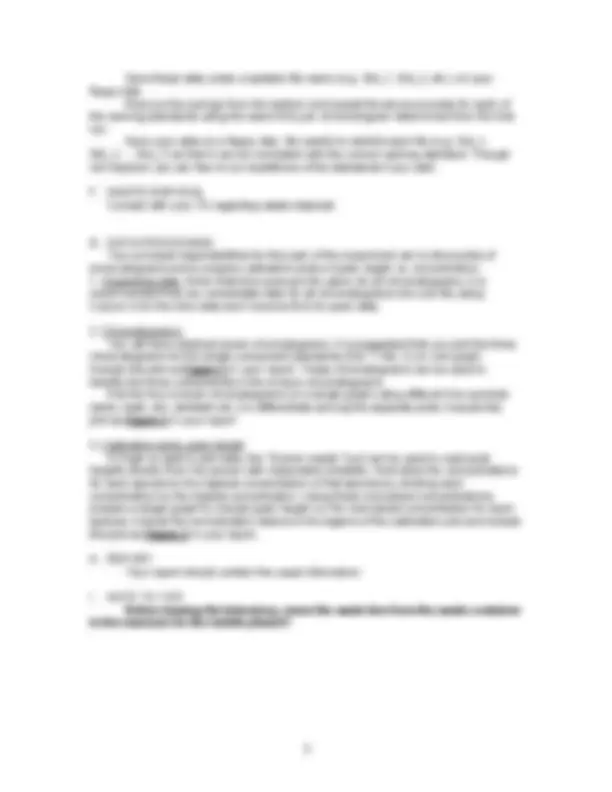



Study with the several resources on Docsity

Earn points by helping other students or get them with a premium plan


Prepare for your exams
Study with the several resources on Docsity

Earn points to download
Earn points by helping other students or get them with a premium plan
Community
Ask the community for help and clear up your study doubts
Discover the best universities in your country according to Docsity users
Free resources
Download our free guides on studying techniques, anxiety management strategies, and thesis advice from Docsity tutors
HPLC is used for the separation of components of soft drinks
Typology: Lab Reports
1 / 3

This page cannot be seen from the preview
Don't miss anything!


The principal purpose of this experiment is to introduce you to procedures and instrumentation used for high performance liquid chromatography (HPLC).
B. OVERVIEW In this experiment you will separate mixtures of components frequently found in soft drinks, namely caffeine, benzoate, and aspartame. You will be given seven solutions containing known amounts of the three species and record the chromatograms.
C. INSTRUMENTATION
D. SOLUTIONS
could plug the chromatographic column. The mobile-phase solution is very labor intensive to prepare; please use no more than necessary! b. Stock standard solutions. Three standard solutions, each containing one of the analytes, will be provided. These solutions will contain a) caffeine (0.4 mg/mL), b) aspartame (6 mg/mL), and c) benzoate (0.7 mg/mL). You should record the exact concentration of each analyte.
Table 1. Volumes of stock standards used to prepare 50 mL of working standards. Standard Volume (mL) of each standard to be added Number (^) Caffeine Benzoate Aspartame 1 4 0 0 2 0 4 0 3 0 0 4 4 1 1 1 5 2 2 2 6 3 3 3 7 5 5 5
[ The following instructions apply only if you need to prepare the seven solutions yourself. Rinse seven 50-mL volumetric flasks first with distilled water and then with three 5-mL volumes of the mobile-phase solution. Mark the flasks 1-7. Clean three 25-mL burets (provided) thoroughly by washing with detergent and rinsing with distilled water. Rinse each buret with several small volumes of one of the stock standard solutions and fill the buret just above the 0.00-mL mark with the stock standard with which it was rinsed. Adjust the buret to the 0.00-mL mark and add the volumes given in Table 1 to appropriately marked 50-mL volumetric flasks. Then, dilute each flask to volume with the filtered mobile phase solution and mix thoroughly. Note: It is very difficult to mix solutions in small volumetric flasks. Each solution should be inverted at least 25 times allowing the air bubble to go all the way between the top and bottom of the flask during each inversion. After the working standards are mixed thoroughly, label seven vials Std 1, Std 2, Std 3 ...... Std 7 and transfer small portions of the standards to appropriately marked vials. ]
E. PROCEDURE Confirm that all instrumental settings are as described under the Instrumentation section (Section III) and that the waste line is in a waste container and not in the reservoir for the mobile phase. Rinse a syringe with several volumes of one of the working standards containing all three components (e.g. Std 6) and fill the syringe with that solution. With the INJECTOR handle in the LOAD position, inject 0.10 mL of solution through the septum. DO NOT REMOVE THE SYRINGE at this point. Move the INJECTOR handle to the INJECT position to inject the sample onto the column and Click Start on the computer screen immediately. The three peaks will appear on the screen in sequence. Click Stop on the computer screen at about 60 s after the third peak returns to baseline. Note the time, convert it to minutes, and set the time per chromatogram (Part III-3) to this time.